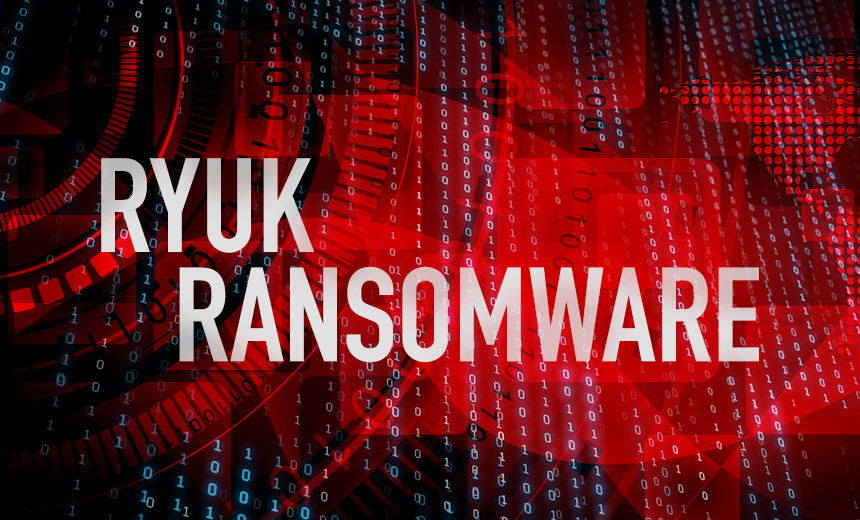Decrypting the Ryuk Ransomware: Understanding the Threat and Mitigating Risks

Since its emergence in 2018, Ryuk ransomware has wreaked havoc on numerous organizations worldwide, including hospitals, local governments, and businesses. This blog aims to explore the modus operandi of Ryuk ransomware attacks, the impact on affected entities, and strategies to mitigate the risks associated with this malicious threat.
Timeline:
Emergence of Ryuk: Ryuk ransomware first surfaced in 2018, believed to be the work of a cybercriminal group known as Wizard Spider.
Targeted Attacks: Ryuk primarily targets high-profile organizations, including healthcare facilities, government agencies, and large enterprises.
File Encryption: Upon infiltration, Ryuk encrypts files and demands exorbitant ransom payments in cryptocurrency, typically Bitcoin, in exchange for decryption keys.
Impact on Organizations: The ransomware attacks disrupt operations, compromise sensitive data, and inflict financial losses on affected organizations, often resulting in significant downtime and reputational damage.
Technical Analysis: The Ryuk ransomware operates through a combination of sophisticated techniques, including:
Phishing Emails: Attackers commonly deploy phishing emails containing malicious attachments or links to distribute Ryuk ransomware payloads to unsuspecting victims.
Exploit Kits: Ryuk may exploit known vulnerabilities in software or leverage exploit kits to gain unauthorized access to systems and initiate the encryption process.
Command-and-Control Infrastructure: The ransomware communicates with command-and-control servers controlled by the attackers to receive instructions and transmit encrypted data, making detection and mitigation challenging.
How It Happened (Technical Details):

Initial Compromise:
Attackers exploit vulnerabilities in software, network services, or remote access mechanisms to gain unauthorized access to the target organization's network.
This may involve exploiting unpatched software vulnerabilities, compromising weak or default credentials, or leveraging phishing emails to trick users into downloading malware or disclosing sensitive information.
Deployment of Ryuk Ransomware:
Once inside the network, attackers deploy Ryuk ransomware payloads on compromised systems, initiating the encryption process to lock down files and data.
Ryuk ransomware employs sophisticated encryption algorithms to render files inaccessible, appending unique file extensions to encrypted files to differentiate them from unencrypted data.
Propagation and Lateral Movement:
After deploying Ryuk ransomware, attackers propagate the malware across the network, moving laterally to infect additional systems and maximize the impact of the attack.
Attackers escalate privileges and exploit vulnerabilities in network defenses to evade detection and containment efforts by security teams.
Ransom Demand and Data Exfiltration:
Following successful encryption, attackers leave ransom notes containing instructions for contacting them via Tor-based communication channels to negotiate ransom payments.
In some cases, attackers may exfiltrate sensitive data before deploying Ryuk ransomware, threatening to release or sell the stolen information if the ransom is not paid.
Mitigation Strategies:

Regular Backup and Recovery: Implementing robust backup and recovery mechanisms can help organizations restore encrypted files without succumbing to ransom demands.
Patch Management: Promptly applying security patches and updates to software and systems can mitigate the risk of exploitation by ransomware.
Email Security Measures: Deploying email filtering solutions and conducting employee training to recognize and report phishing attempts can prevent the initial infection vector used by Ryuk.
Network Segmentation: Segmenting networks and restricting lateral movement can contain the spread of ransomware within an organization's infrastructure, minimizing the impact of an attack.
Incident Response Planning: Developing and testing comprehensive incident response plans enables organizations to respond effectively to ransomware attacks, including containment, recovery, and communication with stakeholders.
Vulnerabilities Exploited by Ryuk Ransomware:
Unpatched Software:
Many organizations fail to promptly apply security patches and updates to their software, leaving known vulnerabilities unaddressed. Attackers exploit these vulnerabilities to gain initial access to the target network.
For example, Ryuk operators may leverage vulnerabilities in remote desktop protocol (RDP) implementations, web servers, or other network services to infiltrate the organization's infrastructure.
Weak Authentication:
Inadequate password policies and weak or compromised credentials provide attackers with unauthorized access to network resources. Attackers may exploit weak or default passwords, reuse passwords across multiple accounts, or leverage stolen credentials obtained from previous data breaches.
Once inside the network, attackers escalate privileges and move laterally across systems to identify valuable targets for encryption.
Lack of Email Security Controls:
Phishing emails serve as a common attack vector for Ryuk ransomware, allowing attackers to deliver malicious payloads to unsuspecting users. Organizations lacking robust email filtering and anti-phishing measures are more susceptible to these attacks.
Attackers craft convincing phishing emails containing malicious attachments or links, tricking users into downloading and executing Ryuk ransomware payloads.
Insufficient Backup Practices:
Failure to maintain up-to-date backups of critical data increases an organization's reliance on ransom payments for data recovery in the event of a Ryuk ransomware attack. Without adequate backups, organizations face the prospect of permanent data loss or costly recovery efforts.
Attackers may target backup systems or storage devices to prevent organizations from restoring encrypted files without paying the ransom.
Lessons Learned:

Patch Management and Vulnerability Remediation:
- Organizations must prioritize patch management and promptly apply security updates to address known vulnerabilities in software and systems. Regular vulnerability assessments and penetration testing can help identify and remediate weaknesses before they can be exploited by attackers.
Strong Authentication and Access Controls:
- Implementing strong authentication mechanisms, such as multi-factor authentication (MFA) and complex password policies, can help prevent unauthorized access to network resources. Organizations should also enforce the principle of least privilege, limiting user privileges to mitigate the impact of potential breaches.
Email Security Awareness Training:
- Employee education and training programs are essential for raising awareness about phishing attacks and other social engineering tactics used by cybercriminals. By teaching employees how to recognize and report suspicious emails, organizations can reduce the risk of successful phishing attacks.
Data Backup and Recovery:
- Maintaining regular backups of critical data is crucial for mitigating the impact of ransomware attacks. Organizations should follow the 3-2-1 backup rule, storing backups in multiple locations, including off-site or in the cloud, to ensure data availability in the event of an attack.
Incident Response and Containment:
- Establishing an effective incident response plan enables organizations to quickly detect, contain, and mitigate the impact of cybersecurity incidents. By defining roles and responsibilities, implementing response procedures, and conducting regular tabletop exercises, organizations can improve their ability to respond to ransomware attacks effectively.
Security Monitoring and Threat Detection:
- Continuous monitoring of network traffic and endpoint activity can help detect anomalous behavior and indicators of compromise associated with ransomware attacks. Deploying intrusion detection and prevention systems (IDPS) and security information and event management (SIEM) solutions enhances the organization's ability to detect and respond to threats proactively.
Engagement with Law Enforcement and Cybersecurity Partners:
- Collaboration with law enforcement agencies and cybersecurity partners can facilitate threat intelligence sharing, enhance incident response capabilities, and support efforts to disrupt cybercriminal operations. Building relationships with industry peers and cybersecurity experts can provide valuable insights and assistance during ransomware incidents.
By incorporating these lessons learned into their cybersecurity strategies, organizations can strengthen their defenses against Ryuk ransomware and other advanced threats, reducing the likelihood of successful attacks and minimizing the impact of security breaches on their operations and stakeholders.
Conclusion: The Ryuk ransomware poses a significant threat to organizations of all sizes, highlighting the importance of proactive cybersecurity measures and preparedness. By understanding the tactics employed by ransomware operators and implementing robust mitigation strategies, organizations can enhance their resilience against Ryuk and similar threats in the evolving cybersecurity landscape.


